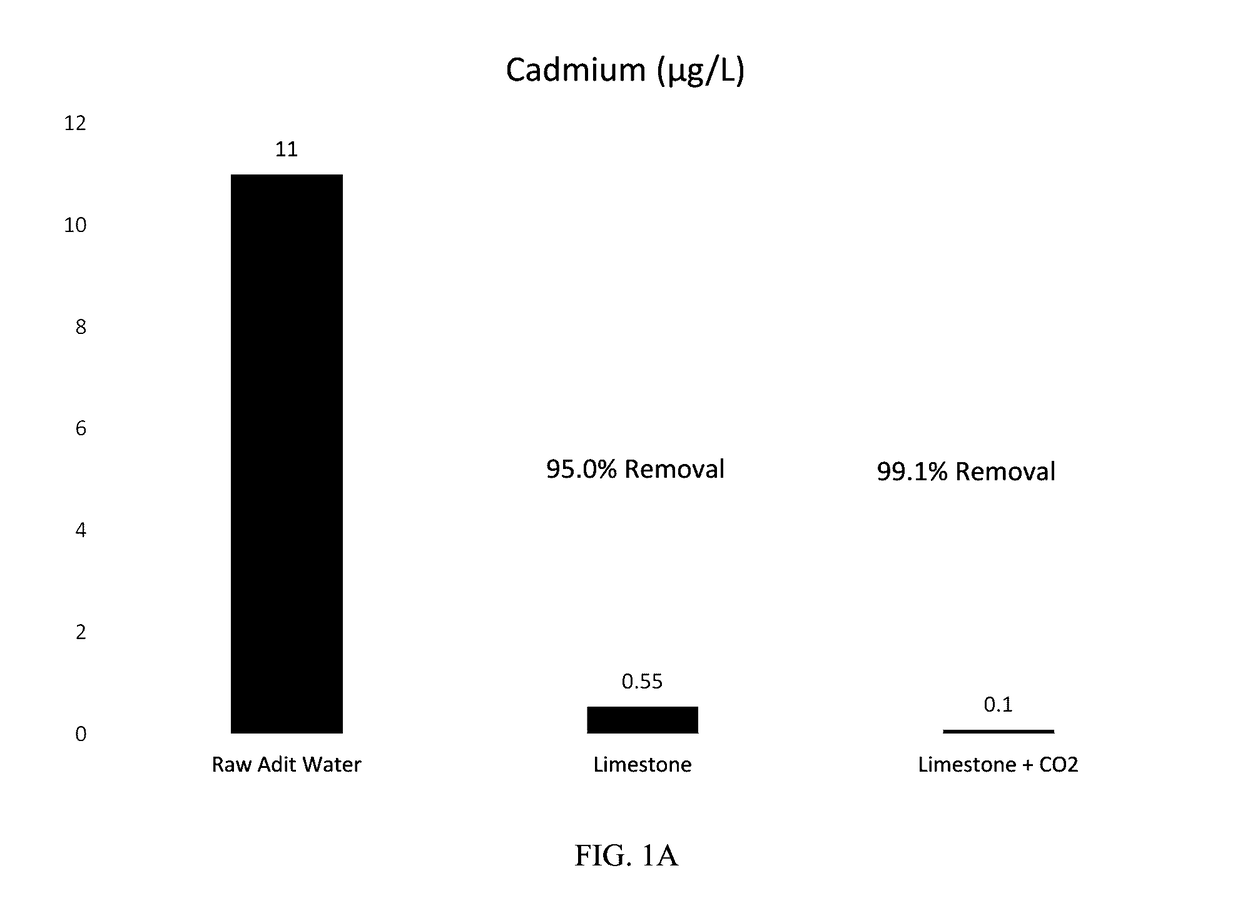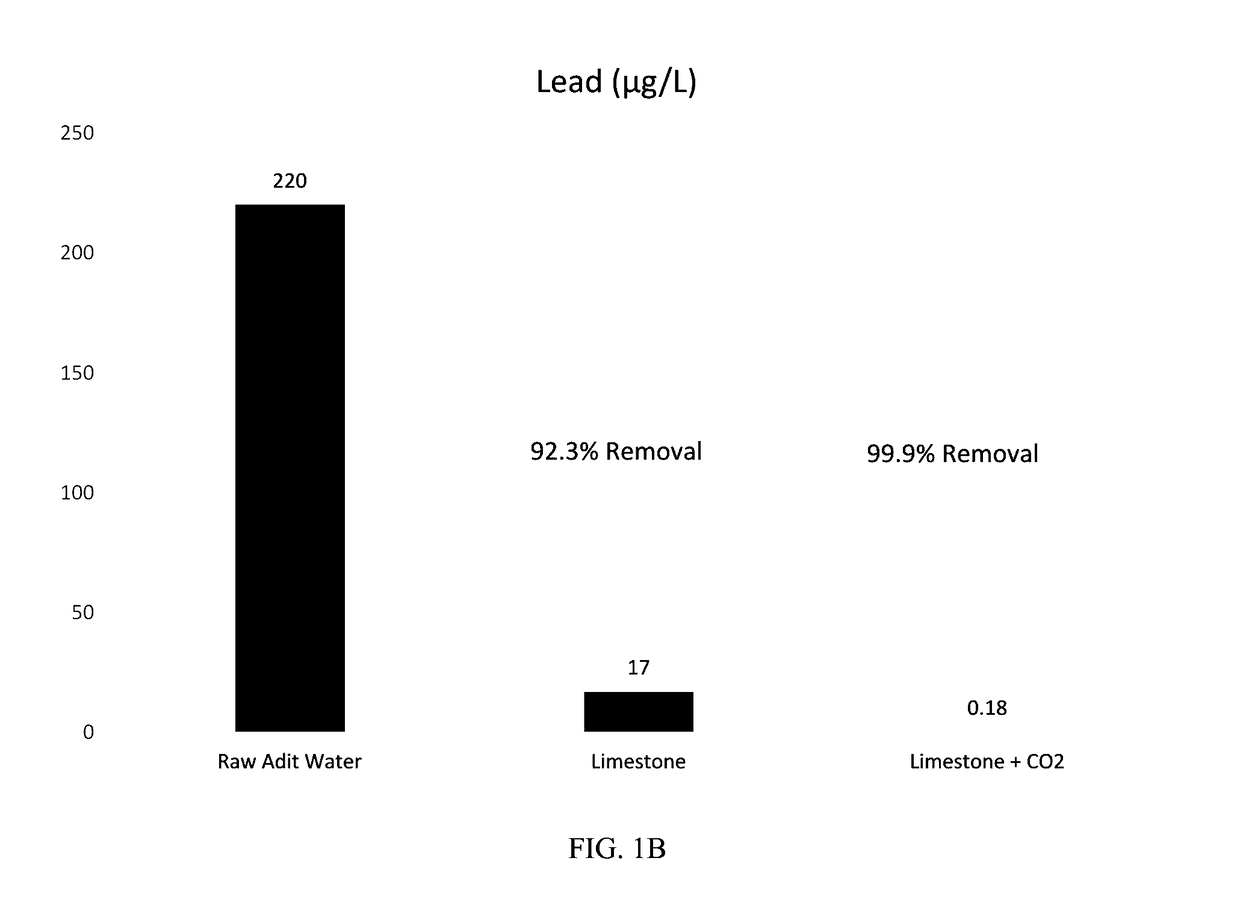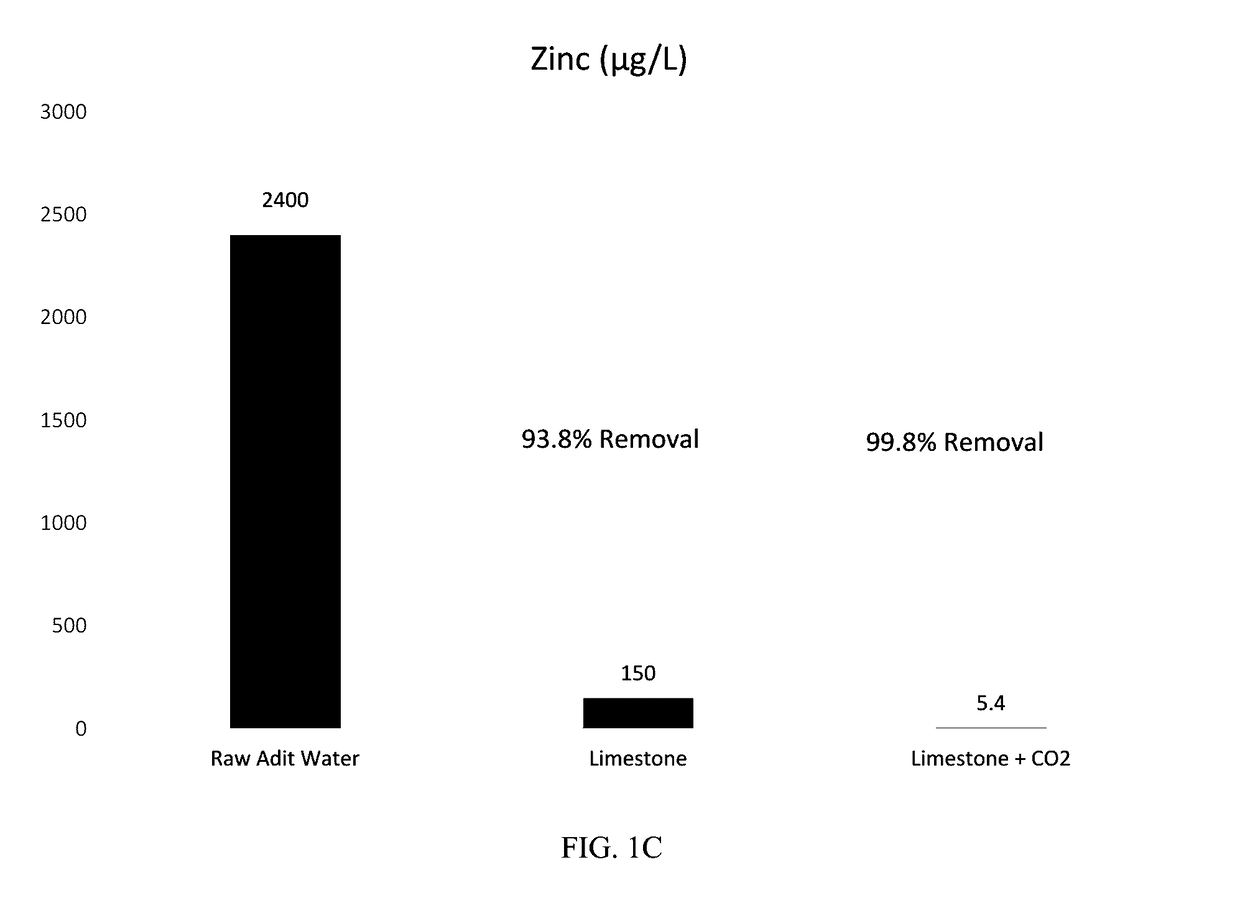Removal of Heavy Metals from Water Contaminated with Heavy Metals by Precipitation of Calcium Carbonate
a technology of calcium carbonate and heavy metals, which is applied in the direction of water/sewage treatment by neutralisation, water treatment parameter control, waste water treatment from quaries, etc., can solve the problems of high disposal cost, difficult dewatering of relatively low-density sludge, and water contamination with heavy metals. , to achieve the effect of reducing maintenance and power requirements
- Summary
- Abstract
- Description
- Claims
- Application Information
AI Technical Summary
Benefits of technology
Problems solved by technology
Method used
Image
Examples
example # 1
Example #1: Bench-Scale Testing: Batch Testing
[0038]Methods: The limestone batches were prepared using approximately ¼-inch minus limestone obtained from a quarry near Helena, Mont. For Batch 1 (Limestone Only), the limestone was placed in a 1 liter (L) poly bottle along with the adit water at a liquid to solid ratio (L:S) of approximately 2.4:1 by mass and mixed in a rotary tumbler for 24 hours. Batch 2 (Limestone Plus CO2) was prepared in the same manner except the adit water was supercharged with carbon dioxide using a diffuser prior to preparation of the batch. Following tumbling, the solutions were decanted from the batches into beakers and sparged with air using an aquarium pump until the pH stabilized (approximately pH 8). Onsite laboratory parameters (temperature, pH, oxidation-reduction potential (ORP), dissolved oxygen (DO), and conductivity were measured during sparging. The solution was then filtered through a 0.45 micrometer (μm) membrane and sent to Test America in Den...
example # 2
Example #2: Bench-Scale Testing: Column Testing
[0040]Methods: Two flow-through column tests were conducted, one with only limestone treatment (C-LMSTN) and the other with CO2 acidification followed by limestone treatment (C-CO2-LMSTN). Effluent from both treatment column processes were then post-treated by air sparging to strip carbon dioxide. The same analytical methods were used as for the batch tests.
[0041]Results: FIGS. 2A-C show the concentration trends over time for cadmium, lead, and zinc within the effluent from the carbon dioxide stripper. Both the limestone only and limestone plus CO2 columns resulted in 96-99% removal of cadmium, lead, and zinc.
[0042]Cadmium concentrations were below the laboratory reporting limit of 0.1 μg / L during all sampling events, with the exception of a value of 0.22 μg / L on Nov. 7, 2014 and 0.27 μg / L on Nov. 14, 2014 (not shown on graph) for the limestone plus CO2 column.
[0043]Lead removals for the limestone plus CO2 column (0.11-0.22 μg / L) were s...
example # 3
Example #3
Procedures
Sampling Procedures
[0057]Phase 1 testing was performed on zinc-spiked deionized water and did not require sampling. For Phase 2, ten-gallons of mining influenced water (MIW) was collected from the Jopes Adit discharge seep on Dec. 2, 2015. Water was collected directly from the seep location where the Jopes Adit water discharges at the surface.
[0058]The water was collected from near the bottom of the pool (approximately 1 m deep) directly into the sample containers, which were filled all the way to the top with no headspace or bubbles. Two 5-gallon plastic carboys were filled, tightly sealed, and the lids taped to minimize escape of carbon dioxide during shipment. Field parameters (pH, Oxidation-Reduction potential [ORP], temperature, and dissolved oxygen [DO]) were measured directly within the pool following sample collection.
Laboratory Procedures
Phase 1—Initial pH Adjustment on Spiked Reagent Water
[0059]Two procedures were performed to evaluate pH adjustment on ...
PUM
| Property | Measurement | Unit |
|---|---|---|
| concentration | aaaaa | aaaaa |
| pH | aaaaa | aaaaa |
| density | aaaaa | aaaaa |
Abstract
Description
Claims
Application Information
 Login to View More
Login to View More - R&D
- Intellectual Property
- Life Sciences
- Materials
- Tech Scout
- Unparalleled Data Quality
- Higher Quality Content
- 60% Fewer Hallucinations
Browse by: Latest US Patents, China's latest patents, Technical Efficacy Thesaurus, Application Domain, Technology Topic, Popular Technical Reports.
© 2025 PatSnap. All rights reserved.Legal|Privacy policy|Modern Slavery Act Transparency Statement|Sitemap|About US| Contact US: help@patsnap.com



